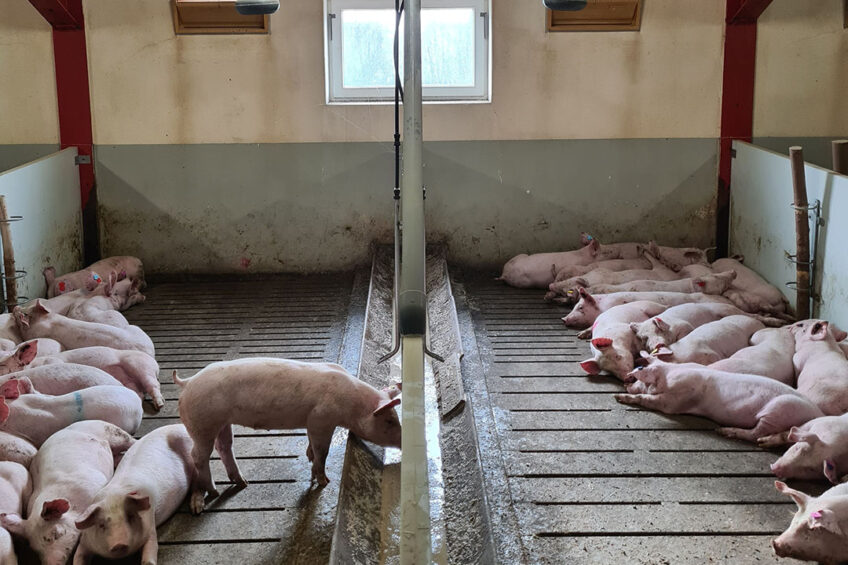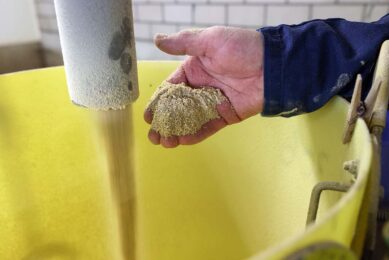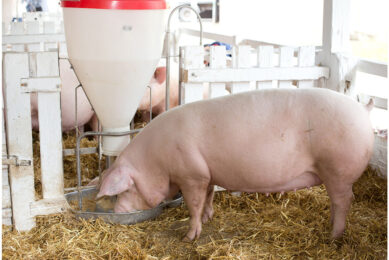Making every pig decision data-driven

Founded in 2018, the Israel-based tech company FarmSee aims to help pig producers gain control over their pig production with real-time data. The company recently closed a second grant from the Israeli Innovation Authority. Here is how it works.
The creation of FarmSee is based on the following observation: Unlike cattle production, pig production has been the subject of few innovations regarding daily monitoring of animals. Nimrod Madar, the CEO of FarmSee, says, “Modern pig producers require information and control; existing methods are inefficient.”
Individual pig recognition
FarmSee’s technology uses a camera-based weighing sensor that provides accurate data for each individual pig. The sensor is installed above each pen in the post-weaning and finishing units and weighs each pig from afar, without human interference, every hour of the day.
Madar explains, “This information is transferred to our cloud-based system, where it is processed to give the grower all the actionable insights needed to make smart farming decisions based on the farm’s actual real-time data instead of forecast growth tables. For example: When should the pigs be taken to the slaughterhouse? The tool will allow the pigs to reach maximum weight and uniformity to ensure quality while avoiding overweight penalties. And when is the optimal time to switch feed compositions? It will minimise their feed conversion ratio as well as identify sick pigs as soon as possible so that they can be treated promptly and herd infection can be avoided.”
Continuous pig weight data
For the company, continuous pig weight data is key for many operations. The company’s sensor combined with an app achieves over 95% accuracy in weight measurement and 99% accuracy in pig identification. Madar says that the technology increases business performance by:
- Ensuring animal welfare (minimising interaction between pigs and people);
- Improving the yield, for example by higher average weight within weight classes and better uniformity;
- Reducing labour costs and improving biosecurity; and
- Improving planning, through accurate weight predictions.
A case study in Kibbutz Lahav
Kibbutz Lahav was founded in 1952 and is located about 20km north of Be’er Sheva, the capital of the Negev region of Israel, a desert city that serves as the gateway to this region. Kibbutz Lahav’s economy is based on agriculture (both livestock and crops) and three industrial ventures: the research centre (Lahav CRO), a meat processing plant and a plastic container plant.
Lahav CRO has a pig farm, established in 1963 for the purpose of research on both human and animal well-being, which includes a commercial pig farm. It works with international universities, medical device companies and global pharmaceutical companies.
The commercial farm would normally employ a professional sorter conducting periodical weight observations and selecting relevant pigs for slaughter according to observation. These data are obviously not gathered daily and cannot track the weight accumulation of a specific pig over time to identify abnormalities. Moreover, the sorter’s error rate varies and is estimated by the farm to be roughly 5–10%.
The current situation where pig producers are forced to grow pigs to a specific target weight without being able to weigh them is completely unreasonable
Nimrod Madar, the CEO of FarmSee
Using automated weight scanning enabled the farm to continuously monitor a complete herd, provide detailed information for each pig (including daily weight levels, i.e. average daily gain), aggregated information (per pen/building/herd) and generate accurate weight forecasts to help planning.
The solution provided the farm with continuous weight information for each pig, reaching an accuracy level of 96–97%. That accuracy was validated by physically weighing the pigs (using a physical scale) twice a week through the finishing period and then comparing the results of the automated weighing system with the results of the physical weighing. That process was used to test the accuracy level of the solution.
Madar concludes, “The current situation where pig producers are forced to grow pigs to a specific target weight without being able to weigh them is completely unreasonable. Our goal is very simple: Make growers’ own data accessible to them, while ensuring animal welfare.” In summary, his goal is to make any pig production decision a data-driven decision.
Currently, the FarmSee solutions are already in use in Denmark, Russia, Israel and Poland. In May 2021, the United States will follow.
 Beheer
Beheer








 WP Admin
WP Admin  Bewerk bericht
Bewerk bericht